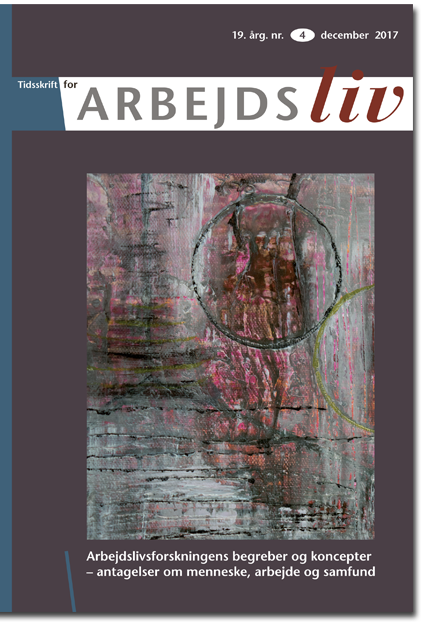Generational differences between the professionalism in two generations of daycare pedagogues
DOI:
https://doi.org/10.7146/tfa.v19i4.109053Abstract
The significance of daycare institutions for society and for peoples life oppor - tunities is a recurring subject in Danish, public debate. Daycare institutions are at the core of the organization of the Danish welfare state and the way it functions. In addition, daycare institutions are an example of how citizens, employees and welfare societies meet in institutionalized settings. In this sense, we find daycare institutions to be emblematic for the specific, societal development in the relationship between citizens, work and society that has evolved since the beginning of the welfare state. Here, researchers have long identified New Public Management as a major turning point in the welfare society and its in - stitutions. Many studies have focused on the effects of NPM in different trades and organizations regarding the perception of the employees of their work tasks. In this article, we raise the question of whether it is possible to identify a before and a after when looking at NPM and its effects of employee understanding of their own professionalism. Our study has a critical perspective on the work in daycare institutions, while viewing them as an example of a welfare institution that employs a very large group of people. Our analysis indicate that NPM has had clear effects on pedagogues’ ability to establish their professionalism. We find apparent differences between daycare educators’ understanding of their own professionalism, depending on whether they have work experiences from the time before NPM or if they exclusively have experiences from the post-NPM period in the daycare area.
Downloads
Published
How to Cite
Issue
Section
License
Forfattere, der publicerer deres værker via dette tidsskrift, accepterer følgende vilkår:
- Forfattere bevarer deres ophavsret og giver tidsskriftet ret til første publicering, samtidigt med at værket ét år efter publiceringen er omfattet af en Creative Commons Attribution-licens, der giver andre ret til at dele værket med en anerkendelse af værkets forfatter og første publicering i nærværende tidsskrift.
- Forfattere kan indgå flere separate kontraktlige aftaler om ikke-eksklusiv distribution af tidsskriftets publicerede version af værket (f.eks. sende det til et institutionslager eller udgive det i en bog), med en anerkendelse af værkets første publicering i nærværende tidsskrift.
- Forfattere har ret til og opfordres til at publicere deres værker online (f.eks. i institutionslagre eller på deres websted) forud for og under manuskriptprocessen, da dette kan føre til produktive udvekslinger, samt tidligere og større citater fra publicerede værker (se The Effect of Open Access).





